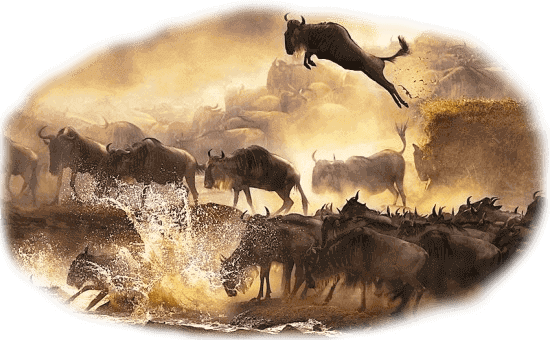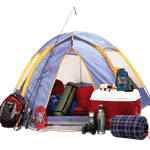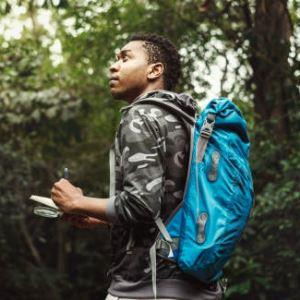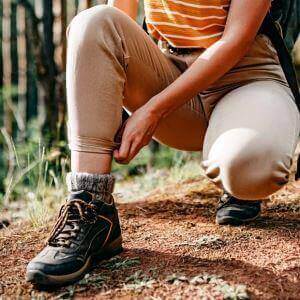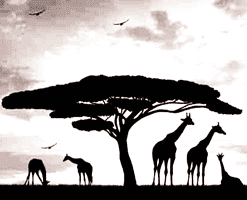 Kenya is a dream destination for many travelers, offering diverse wildlife, stunning landscapes, and a rich cultural experience. For French tourists in particular, planning the ideal safari involves understanding Kenya's seasonal patterns to ensure the most rewarding trip. The best time to visit depends largely on what you want to see and your tolerance for different weather conditions. Kenya has two main dry seasons: one from June to October and a shorter one from January to February. These dry months are generally considered the best for wildlife viewing because animals gather around limited water sources, making them easier to spot. The skies are clear, the days are sunny, and the chances of encountering the Big Five are high in popular reserves like Maasai Mara, Amboseli, and Samburu. From July to October, Kenya hosts the world-famous Great Wildebeest Migration. Millions of wildebeest, accompanied by zebras and gazelles, cross the Mara River in a dramatic and often perilous journey. This is also the busiest and most expensive time for safaris, but it's undeniably worth it for first-time visitors who want the classic safari spectacle. The shoulder seasons November to early December and late January to March offer fewer crowds and more affordable rates. While wildlife spotting might require a bit more patience due to thicker vegetation and scattered rains, the scenery is greener and photographers will appreciate the vibrant landscapes. This is also a great time for birdwatching as migratory species arrive. Rainy seasons, particularly from March to May, see a significant drop in tourist numbers. Though many roads become muddy and some lodges close, this period still has its charm. With fewer tourists, travelers can enjoy a more intimate experience with nature. However, this is not ideal for those whose primary goal is wildlife viewing. The best season for French travelers to go on safari in Kenya is generally during the longer dry season from June to October, especially if witnessing the Great Migration is a priority. This period aligns well with European summer holidays, making it convenient for families and working professionals alike. The best time to visit Kenya for a safari depends on personal preferences, including crowd tolerance, budget, and specific interests. For those who enjoy quieter experiences and prefer less crowded parks, the shoulder seasons may be the perfect window. During these months, travelers can take in the beauty of Kenya's savannahs, mountains, and forests at a slower, more relaxed pace. Those looking for maximum wildlife encounters, including the iconic Big Five or the thunderous movement of wildebeest herds, will find the dry seasons more fruitful. French tourists who value photography, nature, and authentic experiences will find that Kenya delivers throughout the year, albeit in different forms. While summer is excellent for migration sightings, the rainy months bring out Kenya's vivid colors and birdlife, transforming the terrain into a lush paradise. Some lodges also offer discounts during low season, making luxury experiences more accessible. Ultimately, Kenya's magic lies in its diversity from early morning game drives in open plains to sundowners overlooking waterholes teeming with elephants. Whether it's spotting lions on the prowl, marveling at a river crossing during migration, or simply enjoying a sunrise over the savannah, Kenya promises unforgettable experiences for every kind of traveler, every month of the year.
Kenya is a dream destination for many travelers, offering diverse wildlife, stunning landscapes, and a rich cultural experience. For French tourists in particular, planning the ideal safari involves understanding Kenya's seasonal patterns to ensure the most rewarding trip. The best time to visit depends largely on what you want to see and your tolerance for different weather conditions. Kenya has two main dry seasons: one from June to October and a shorter one from January to February. These dry months are generally considered the best for wildlife viewing because animals gather around limited water sources, making them easier to spot. The skies are clear, the days are sunny, and the chances of encountering the Big Five are high in popular reserves like Maasai Mara, Amboseli, and Samburu. From July to October, Kenya hosts the world-famous Great Wildebeest Migration. Millions of wildebeest, accompanied by zebras and gazelles, cross the Mara River in a dramatic and often perilous journey. This is also the busiest and most expensive time for safaris, but it's undeniably worth it for first-time visitors who want the classic safari spectacle. The shoulder seasons November to early December and late January to March offer fewer crowds and more affordable rates. While wildlife spotting might require a bit more patience due to thicker vegetation and scattered rains, the scenery is greener and photographers will appreciate the vibrant landscapes. This is also a great time for birdwatching as migratory species arrive. Rainy seasons, particularly from March to May, see a significant drop in tourist numbers. Though many roads become muddy and some lodges close, this period still has its charm. With fewer tourists, travelers can enjoy a more intimate experience with nature. However, this is not ideal for those whose primary goal is wildlife viewing. The best season for French travelers to go on safari in Kenya is generally during the longer dry season from June to October, especially if witnessing the Great Migration is a priority. This period aligns well with European summer holidays, making it convenient for families and working professionals alike. The best time to visit Kenya for a safari depends on personal preferences, including crowd tolerance, budget, and specific interests. For those who enjoy quieter experiences and prefer less crowded parks, the shoulder seasons may be the perfect window. During these months, travelers can take in the beauty of Kenya's savannahs, mountains, and forests at a slower, more relaxed pace. Those looking for maximum wildlife encounters, including the iconic Big Five or the thunderous movement of wildebeest herds, will find the dry seasons more fruitful. French tourists who value photography, nature, and authentic experiences will find that Kenya delivers throughout the year, albeit in different forms. While summer is excellent for migration sightings, the rainy months bring out Kenya's vivid colors and birdlife, transforming the terrain into a lush paradise. Some lodges also offer discounts during low season, making luxury experiences more accessible. Ultimately, Kenya's magic lies in its diversity from early morning game drives in open plains to sundowners overlooking waterholes teeming with elephants. Whether it's spotting lions on the prowl, marveling at a river crossing during migration, or simply enjoying a sunrise over the savannah, Kenya promises unforgettable experiences for every kind of traveler, every month of the year.
Best Safari Travel Periods for French Tourists
| Travel Period | Weather | Wildlife Viewing | Tourist Crowds | Budget Level |
|---|---|---|---|---|
| June to October | Dry & clear | Excellent (Migration) | High | High (peak season) |
| November to December | Short rains | Moderate | Low to Medium | Moderate |
| January to February | Dry & warm | Excellent | Medium | Moderate to High |
| March to May | Long rains | Low | Low | Low (off-peak) |
Best months for a Kenya safari tour from France
For French travelers planning a safari adventure, timing is everything. Kenya's climate and seasonal wildlife behavior vary throughout the year, directly influencing the overall experience. While the country welcomes visitors year-round, some months offer unique advantages in terms of weather, animal sightings, and travel convenience. The dry seasons, from late June to October and January to February, are widely considered the best times for a safari. During these months, the vegetation is sparse, water sources are limited, and wildlife tends to gather around rivers and waterholes. This makes animal sightings easier and more frequent. Iconic parks such as the Maasai Mara, Amboseli, and Tsavo are at their prime, providing a front-row seat to the wonders of African wildlife. Clear skies and moderate temperatures also make for comfortable game drives and excellent photographic conditions. For those aiming to witness the legendary Great Wildebeest Migration, visiting between July and October is essential. This period draws large numbers of tourists due to the spectacle of millions of wildebeest and zebras crossing the Mara River, often pursued by predators. The shoulder seasons, particularly November to early December and late January through March, are also attractive for French tourists. These months are less crowded, slightly more affordable, and still offer good chances to see wildlife. The landscapes are greener, and it's a perfect time for birdwatching, as migratory species make their appearance. However, travelers should be aware of Kenya's rainy seasons. The long rains occur from March to May, while the short rains typically fall in November. These periods see reduced accessibility due to muddy roads and overgrown vegetation, which can hinder game viewing. Yet, for adventurous travelers seeking solitude and off-the-beaten-path experiences, this might be a charming time to explore. Kenya safari seasons explained for French visitors show that the best period depends on personal goals. If maximizing animal sightings and experiencing dramatic nature events are top priorities, the dry months are ideal. For those seeking value and a more relaxed atmosphere, the shoulder seasons offer great alternatives. French tourists will find that Kenya’s diverse landscapes, abundant wildlife, and unique seasonal rhythms provide remarkable opportunities no matter when they choose to visit. Whether one dreams of observing lions in the golden morning light or watching elephants traverse the savannah at dusk, Kenya delivers magical moments throughout the year. The country's varied geography from coastal plains and mountain ranges to lush forests and arid deserts ensures that each region offers something different in each season. Planning ahead and aligning travel dates with preferred experiences is essential to getting the most out of a safari. For example, those interested in the Great Migration should target the mid-year dry season, while birdwatchers and botanical enthusiasts might prefer the greener, rain-kissed months. Additionally, budgeting and personal travel style play important roles in choosing the right time to visit. Whether you seek the high energy of peak season or the serenity of quieter months, Kenya guarantees a safari that’s both memorable and rewarding.
Best Dry Season Months for Wildlife Safaris in Kenya
Choosing the right time to go on safari can significantly enhance the experience for French travelers. Kenya, with its two primary dry seasons, offers some of the best conditions in the world for wildlife viewing.
- June to October: The Prime Safari Window: This period is considered the best dry season in Kenya for French safari tourists. It coincides with the Great Wildebeest Migration in Maasai Mara, one of the most extraordinary natural spectacles. The landscape is dry and open, making it easier to spot wildlife. Water sources become scarce, drawing animals to rivers and waterholes, offering excellent photo opportunities.
- January to February: A Short but Sweet Season: This is the second dry season, ideal for travelers who want a quieter experience. The weather is warm, the skies are clear, and many animals have young, offering a unique chance to witness nurturing behaviors and predator-prey interactions in the open.
- Advantages of the Dry Season: Roads are more accessible, insects like mosquitoes are fewer, and the chances of spotting the Big Five are significantly higher. French tourists also benefit from better lighting conditions for photography and fewer disruptions due to weather.
Plan your safari around these dry seasons to make the most of Kenya's breathtaking wildlife and landscapes. By choosing the right season, you not only enhance your chances of incredible animal sightings but also ensure smoother travel experiences, better accommodation availability, and ideal conditions for photography and nature observation. Whether you're drawn to dramatic river crossings, peaceful sunsets, or close-up encounters with the Big Five, timing your safari well will elevate every moment of your adventure.
Wildebeest Migration Viewing Season in Maasai Mara
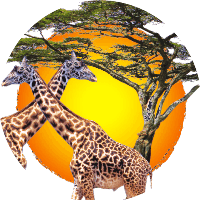 The Great Wildebeest Migration is an awe-inspiring natural phenomenon and a major highlight for any safari-goer in Kenya. Taking place annually, this mass movement of over 1.5 million wildebeest, accompanied by hundreds of thousands of zebras and gazelles, stretches across the Serengeti-Mara ecosystem. The climax of this journey occurs in Kenya's Maasai Mara, where the animals cross the perilous Mara River in search of greener pastures. French tourists looking to witness this dramatic spectacle should consider traveling between July and October. This period is when the herds typically reach the Maasai Mara, and the river crossings are at their most intense and visually captivating. Crocodiles lie in wait in the rivers, and predators like lions and hyenas follow the herds, creating an electrifying experience full of life-and-death moments. The landscape during this time is also dry and open, making it easier to spot wildlife and capture unforgettable photos. For those asking when should French tourists travel to Kenya for the Great Migration, the answer is clear: the peak months of July, August, September, and October offer the best chances to witness this world-renowned event. These months fall within Kenya’s long dry season, ensuring optimal weather conditions, good road access, and clear skies for photography and game drives. Booking accommodations and safari packages well in advance is highly recommended, as demand during migration season is exceptionally high. Luxury lodges and tented camps near the Mara River often fill up months ahead. French travelers can choose between fly-in safaris for speed and comfort or classic overland safaris that offer more immersive experiences across multiple parks. Maasai Mara offers abundant resident wildlife, including elephants, giraffes, cheetahs, and leopards. Bird enthusiasts will also find this time rewarding, as numerous species can be observed along the riverbanks and savannahs. Experiencing the Great Migration in Kenya is a once-in-a-lifetime adventure that captures the essence of Africa's untamed wilderness. With proper planning and timing, French tourists can witness this epic journey of survival and instinct, as wildebeest and other animals brave the treacherous Mara River crossings. The sheer scale of movement, the dramatic predator-prey interactions, and the raw power of nature leave a lasting impression on every traveler. These moments provide not only extraordinary photographic opportunities but also deep emotional connections to the rhythms of the natural world. Beyond the thrilling wildlife encounters, the experience is enriched by the rich Maasai culture, luxurious lodges, and immersive landscapes. Whether it's your first safari or a return journey, the Great Migration offers something new each time. For French tourists seeking an unforgettable adventure, this is a rare window into the wild that inspires awe and respect for the delicate balance of life on the savannah.
The Great Wildebeest Migration is an awe-inspiring natural phenomenon and a major highlight for any safari-goer in Kenya. Taking place annually, this mass movement of over 1.5 million wildebeest, accompanied by hundreds of thousands of zebras and gazelles, stretches across the Serengeti-Mara ecosystem. The climax of this journey occurs in Kenya's Maasai Mara, where the animals cross the perilous Mara River in search of greener pastures. French tourists looking to witness this dramatic spectacle should consider traveling between July and October. This period is when the herds typically reach the Maasai Mara, and the river crossings are at their most intense and visually captivating. Crocodiles lie in wait in the rivers, and predators like lions and hyenas follow the herds, creating an electrifying experience full of life-and-death moments. The landscape during this time is also dry and open, making it easier to spot wildlife and capture unforgettable photos. For those asking when should French tourists travel to Kenya for the Great Migration, the answer is clear: the peak months of July, August, September, and October offer the best chances to witness this world-renowned event. These months fall within Kenya’s long dry season, ensuring optimal weather conditions, good road access, and clear skies for photography and game drives. Booking accommodations and safari packages well in advance is highly recommended, as demand during migration season is exceptionally high. Luxury lodges and tented camps near the Mara River often fill up months ahead. French travelers can choose between fly-in safaris for speed and comfort or classic overland safaris that offer more immersive experiences across multiple parks. Maasai Mara offers abundant resident wildlife, including elephants, giraffes, cheetahs, and leopards. Bird enthusiasts will also find this time rewarding, as numerous species can be observed along the riverbanks and savannahs. Experiencing the Great Migration in Kenya is a once-in-a-lifetime adventure that captures the essence of Africa's untamed wilderness. With proper planning and timing, French tourists can witness this epic journey of survival and instinct, as wildebeest and other animals brave the treacherous Mara River crossings. The sheer scale of movement, the dramatic predator-prey interactions, and the raw power of nature leave a lasting impression on every traveler. These moments provide not only extraordinary photographic opportunities but also deep emotional connections to the rhythms of the natural world. Beyond the thrilling wildlife encounters, the experience is enriched by the rich Maasai culture, luxurious lodges, and immersive landscapes. Whether it's your first safari or a return journey, the Great Migration offers something new each time. For French tourists seeking an unforgettable adventure, this is a rare window into the wild that inspires awe and respect for the delicate balance of life on the savannah.
When to See the Great Migration in Kenya's Maasai Mara
The Great Wildebeest Migration is often considered one of the most breathtaking wildlife spectacles on Earth, drawing nature enthusiasts from around the globe, including a growing number of French tourists. This massive annual event involves over 1.5 million wildebeest, along with hundreds of thousands of zebras and gazelles, moving across the Serengeti-Mara ecosystem in search of greener pastures. The climax of this migration happens in Kenya’s Maasai Mara between July and October, making it a prime window for safari adventures. This period not only provides excellent game viewing but also dramatic predator-prey interactions, especially during the famous Mara River crossings. Tourists may witness crocodiles ambushing the herds mid-crossing, while lions, cheetahs, and hyenas follow on land. The open, dry landscape enhances visibility, allowing for unforgettable photographic opportunities. For those asking when should French tourists travel to Kenya for the Great Migration, the best answer lies in planning a trip during these dry mid-year months. Not only is the wildlife activity at its peak, but the weather conditions are ideal for safaris clear skies, accessible roads, and comfortable daytime temperatures. Accommodations near the migration route fill up quickly during this period, so early booking is essential. Besides the migration itself, the Maasai Mara offers a wealth of additional attractions, including year-round resident animals such as elephants, giraffes, leopards, and an incredible array of birds. Visitors can also immerse themselves in local Maasai culture through village visits and guided nature walks. A safari during migration season promises much more than just animal sightings. It delivers a full sensory experience from the rumble of hooves echoing across the plains to the golden sunsets over the savannah. The emotional impact of witnessing such raw natural drama is profound, making it a cherished memory for any traveler. French tourists considering this journey should choose between fly-in safaris for convenience or more adventurous road safaris that explore multiple parks. Either way, combining the Maasai Mara with nearby attractions like Lake Nakuru or Amboseli can enrich the overall experience. The Great Migration is more than a safari highlight; it's a celebration of life, endurance, and the intricate balance of nature. With thoughtful preparation and perfect timing, French travelers can enjoy a once-in-a-lifetime encounter that captures the very essence of wild Africa.
Best Weather Conditions for Safari Trips in Kenya
Kenya's varied climate plays a crucial role in planning a memorable safari. Understanding the seasonal shifts can help French families make the most of their holiday experience. Kenya features two main dry seasons, typically from June to October and again from January to February. These months are ideal for game viewing, as animals are easier to spot around limited water sources and the bush is less dense. Clear skies and mild temperatures also make for more comfortable travel and excellent photography. For French families traveling with children, the dry season provides safer and smoother terrain for game drives, reducing the likelihood of weather-related disruptions. Parks such as Maasai Mara, Amboseli, and Tsavo are especially vibrant during this period, with frequent sightings of lions, elephants, giraffes, and even the elusive leopard. Kenya's rainy seasons, spanning March to May (long rains) and November to December (short rains), bring lush greenery but also muddy trails and a higher likelihood of vehicle challenges. While this season offers fewer tourists and lower accommodation prices, it may not be ideal for first-time visitors or those prioritizing wildlife density. The top safari months in Kenya for French families on holiday fall within the dry seasons. These typically stretch from June to October and from January to February, offering the most favorable conditions for wildlife viewing and outdoor activities, therefore, being the best time to plan a safari tour to Kenya. During these months, the skies are mostly clear, and rainfall is minimal, making game drives smoother and safer for families, especially those with young children. The reduced vegetation also makes it easier to spot animals such as lions, elephants, giraffes, and even elusive predators like leopards. For families seeking a stress-free adventure, the dry season provides predictable weather and excellent road conditions, which means better access to Kenya's renowned national parks, including the Maasai Mara, Amboseli, and Tsavo. Additionally, the risk of mosquito-borne illnesses tends to be lower during the dry months, an important consideration for those traveling with children. These months also coincide with school holidays in France, making it more convenient for families to plan long-haul trips without disrupting academic schedules. Booking accommodations early is advisable, as lodges and camps tend to fill up quickly during peak periods. These benefits create a safari experience that is safe, educational, and thrilling for all ages a true family adventure that brings the magic of Africa to life.
Dry and Wet Seasons to Consider Before Planning Your Safari
Kenya experiences a dynamic climate with alternating dry and wet seasons that significantly impact safari experiences. For French tourists eager to witness African wildlife, understanding these seasonal patterns is crucial to planning a successful trip. The two dry seasons in Kenya, from June to October and again from January to February, are generally considered the best for game viewing. These months are characterized by clear skies, minimal rainfall, and moderate temperatures. Wildlife tends to gather near rivers and waterholes, making sightings more predictable and rewarding. The sparse vegetation enhances visibility, and roads within national parks are more accessible. For photography enthusiasts, the lighting conditions during this time are superb. The wet seasons March to May (long rains) and November to December (short rains) transform Kenya's landscape into a lush, green paradise. These months are excellent for birdwatching as migratory birds arrive, and the scenery becomes vibrant. However, thick vegetation and muddy roads can make wildlife harder to spot and travel more challenging. Some lodges close during the long rains due to reduced demand and difficult access. For French tourists, the choice between dry and wet seasons depends on personal preferences and travel goals. Those prioritizing abundant wildlife and ease of travel should aim for the dry months. On the other hand, travelers seeking fewer crowds, lower prices, and a unique perspective on Kenya's natural beauty may find the wet season offers unexpected rewards. Balancing weather conditions, wildlife visibility, and travel logistics will ensure a fulfilling and memorable Kenyan safari experience tailored to each visitor's desires and expectations. French tourists should assess their goals carefully whether it's viewing the Great Migration, birdwatching during the rainy season, or enjoying a quieter off-peak safari. Each season offers its own unique charm and challenges. By researching in advance and choosing a travel period that aligns with their interests, visitors can avoid common pitfalls such as limited accessibility or low wildlife visibility. Families with children might benefit from the dry months for better terrain and fewer insects, while seasoned adventurers might appreciate the solitude of the rainy season. Regardless of timing, Kenya offers an immersive experience that blends incredible wildlife encounters with the rich cultural tapestry of the local communities. With the right preparation and realistic expectations, a Kenyan safari becomes more than a holiday it becomes a personal journey into the heart of the wild.
Budget and Crowd Levels During Safari Travel Seasons
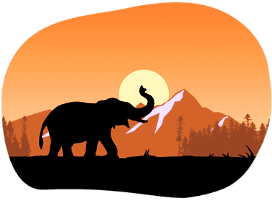 Planning a safari to Kenya involves more than just selecting the right destination; timing plays a significant role in both cost and crowd levels. For French tourists, aligning travel with budget and preferred experiences can make a world of difference. The peak safari season in Kenya runs from July through October, coinciding with the Great Migration. This window also aligns with the European summer holidays, including those in France. While it offers the best chance to witness dramatic wildlife events and clear, dry weather, it’s also the busiest and most expensive period. Prices for accommodations and safari packages surge, and national parks can get quite crowded. The shoulder seasons November to early December and late January to March present a middle ground. French tourists traveling during these months enjoy reduced prices and fewer crowds while still catching good wildlife sightings. The parks are quieter, making for more relaxed game drives and better photo opportunities. Rainfall is more likely but typically brief and not overly disruptive. The low season, especially from March to May, sees the fewest tourists due to the long rains. Although wildlife is harder to spot, this season offers the best rates and a lush, green backdrop. It appeals to those who enjoy off-the-beaten-path adventures and solitude. For families in particular, Kenya safari tours during French school holidays especially in July, August, and late December can be both enriching and logistically convenient. However, early booking is essential to secure preferred accommodations and avoid elevated last-minute prices. French tourists should weigh the trade-offs between crowd levels, pricing, and safari quality. While the peak season provides dramatic wildlife encounters and dry, reliable weather, it comes at a premium. Those traveling in July through October should be prepared for increased costs and more tourists, especially around major attractions like Maasai Mara. Still, the exceptional game viewing and iconic events like the Great Migration often justify the investment. The shoulder seasons notably November and late January through March offer appealing alternatives. The parks are quieter, and accommodations are more accessible. These months still provide good wildlife visibility, particularly for elephants, giraffes, and predator sightings in open landscapes. Photographers will appreciate the softer light and more personalized game drives. Low season travel, while not ideal for first-timers prioritizing animal density, attracts seasoned adventurers who value serenity, lush scenery, and discounted rates. Families and budget-conscious travelers willing to embrace a bit of rain can find excellent value. Kenya delivers year-round. It’s a matter of choosing the time that best aligns with personal interests, whether it's thrilling predator chases during peak migration or tranquil nature escapes during quieter months. Regardless of when you visit, the wildlife, landscapes, and cultural experiences combine to make every safari unique and memorable.
Planning a safari to Kenya involves more than just selecting the right destination; timing plays a significant role in both cost and crowd levels. For French tourists, aligning travel with budget and preferred experiences can make a world of difference. The peak safari season in Kenya runs from July through October, coinciding with the Great Migration. This window also aligns with the European summer holidays, including those in France. While it offers the best chance to witness dramatic wildlife events and clear, dry weather, it’s also the busiest and most expensive period. Prices for accommodations and safari packages surge, and national parks can get quite crowded. The shoulder seasons November to early December and late January to March present a middle ground. French tourists traveling during these months enjoy reduced prices and fewer crowds while still catching good wildlife sightings. The parks are quieter, making for more relaxed game drives and better photo opportunities. Rainfall is more likely but typically brief and not overly disruptive. The low season, especially from March to May, sees the fewest tourists due to the long rains. Although wildlife is harder to spot, this season offers the best rates and a lush, green backdrop. It appeals to those who enjoy off-the-beaten-path adventures and solitude. For families in particular, Kenya safari tours during French school holidays especially in July, August, and late December can be both enriching and logistically convenient. However, early booking is essential to secure preferred accommodations and avoid elevated last-minute prices. French tourists should weigh the trade-offs between crowd levels, pricing, and safari quality. While the peak season provides dramatic wildlife encounters and dry, reliable weather, it comes at a premium. Those traveling in July through October should be prepared for increased costs and more tourists, especially around major attractions like Maasai Mara. Still, the exceptional game viewing and iconic events like the Great Migration often justify the investment. The shoulder seasons notably November and late January through March offer appealing alternatives. The parks are quieter, and accommodations are more accessible. These months still provide good wildlife visibility, particularly for elephants, giraffes, and predator sightings in open landscapes. Photographers will appreciate the softer light and more personalized game drives. Low season travel, while not ideal for first-timers prioritizing animal density, attracts seasoned adventurers who value serenity, lush scenery, and discounted rates. Families and budget-conscious travelers willing to embrace a bit of rain can find excellent value. Kenya delivers year-round. It’s a matter of choosing the time that best aligns with personal interests, whether it's thrilling predator chases during peak migration or tranquil nature escapes during quieter months. Regardless of when you visit, the wildlife, landscapes, and cultural experiences combine to make every safari unique and memorable.
Off-peak and Peak Safari Travel Periods in Kenya
Planning the timing of a Kenyan safari is essential to balancing great wildlife viewing with manageable crowds and budget-friendly options. French tourists benefit by understanding the differences between Kenya’s off-peak and peak travel seasons.
- Peak Season (June to October): This period corresponds with Kenya's long dry season and coincides with the spectacular Great Wildebeest Migration. It is the busiest time for safaris due to excellent wildlife visibility, ideal weather, and European summer holidays. However, with high demand come higher prices and crowded parks. Booking several months in advance is crucial to secure the best accommodations.
- Shoulder Season (November to early December & late January to March): These months offer a great balance between value and experience. Wildlife is still abundant, particularly in well-watered regions, and the landscape is lush following short rains. Safari lodges offer more availability and lower rates, and parks are less congested, making it ideal for relaxed exploration.
- Low Season (March to May): This is Kenya’s long rainy season. Many lodges close, roads may become impassable, and animals are harder to spot. However, prices are at their lowest, and the scenery is stunningly green. It’s perfect for seasoned safari-goers looking for solitude and photographers seeking dramatic skies and verdant backdrops.
Choosing when to visit Kenya depends on your priorities. Whether you're drawn to the excitement of witnessing the Great Migration, the serenity of a peaceful bush retreat, or the value of traveling during a quieter, more affordable season, each period offers something unique. The dry season, from June to October, is ideal for wildlife sightings, while the shoulder seasons offer fewer crowds and lower prices. For photography enthusiasts, soft lighting and vibrant landscapes await during and after the rains. With careful planning, travelers can align their safari experience with the seasonal features that best suit their travel goals and expectations.
